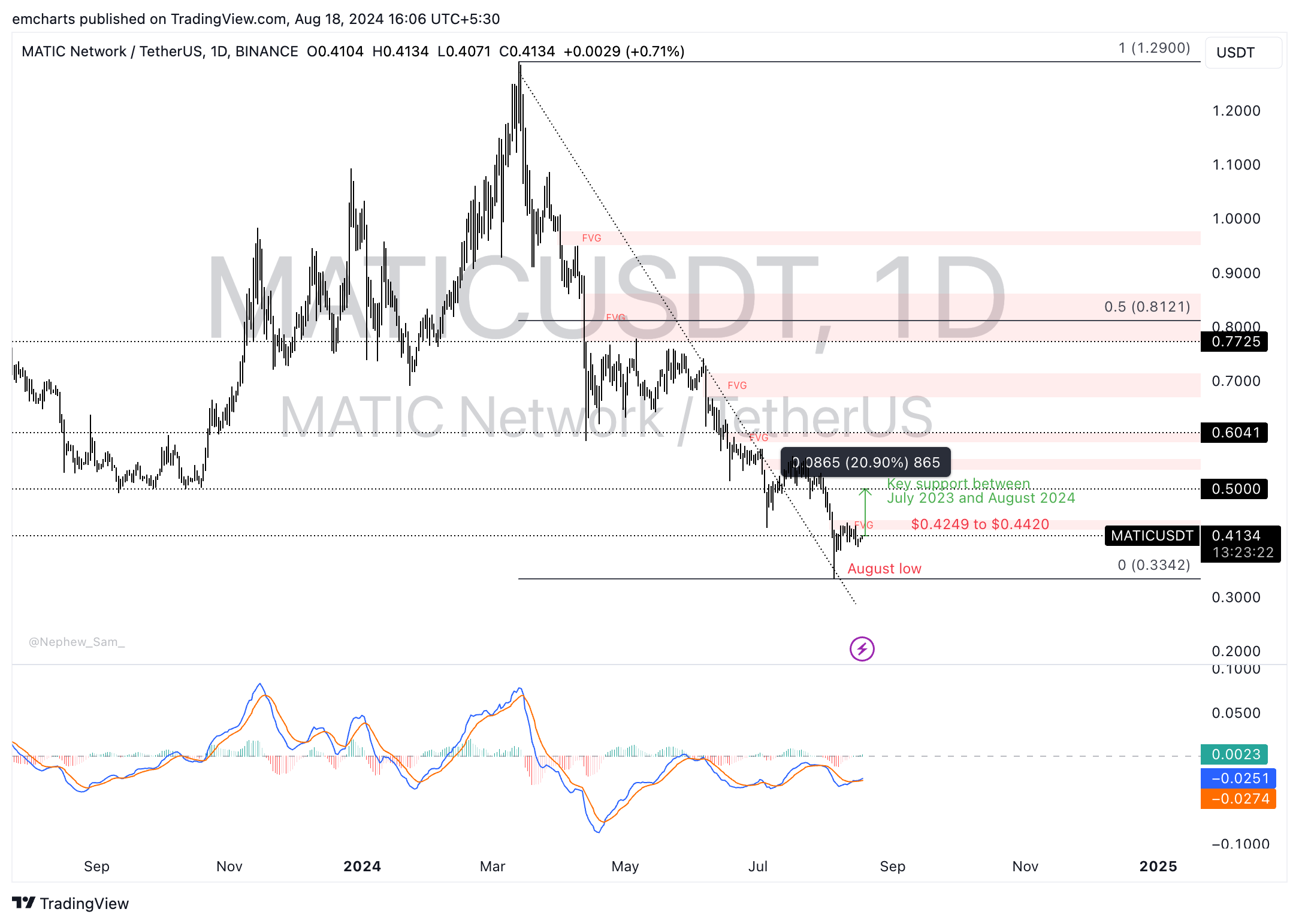Polygon confirms September 4 migration of MATIC to POL, here’s what to expect
- Polygon picks September 4 as the date to migrate MATIC to POL token.
- In the initial phase, POL will replace MATIC as a native gas and staking token for the Proof-of-Stake network.
- MATIC erased nearly 4% of its value in the last seven days, down to $0.4093 at the time of writing.
Polygon, the largest Ethereum scaling solution announced that MATIC token will migrate to POL on September 4. The new token will replace MATIC as a native gas and staking token for the Polygon Proof-of-Stake (PoS) network.
The Layer 2 project plans the migration in several phases, as the new token is expected to play a key role in the AggLayer.
MATIC to POL migration, role in AggLayer and other developments
In an official blog, Polygon dropped the details of MATIC’s migration to POL on September 4. The migration will take place in different phases and eventually POL will play a key role in Polygon’s AggLayer project.
AggLayer is instrumental in Polygon’s multi-chain ecosystem. The project connects different components within the Polygon network including the PoS chain that facilitates fast and cheap transactions for users.
The Layer 2 project says that MATIC holders on the Polygon PoS chain don’t need to take any action. Users holding MATIC on Ethereum, Polygon zero-knowledge rollup zkEVM and in centralized exchanges may have to migrate their assets.
MATIC could extend gains by 20%, revisit $0.50
MATIC broke out of its multi-month downtrend in July 2024. MATIC trades at $0.4134 at the time of writing. The Layer 2 scaling token is likely to extend gains by 20.90% and hit its target of $0.50. This is a key level for MATIC, it acted as key support for MATIC between July 2023 and August 2024.
The Moving Average Convergence Divergence (MACD) indicator shows positive underlying momentum in MATIC price trend.

MATIC/USDT daily chart
Looking down, MATIC could find support at the August 5 low of $0.3342.
Bitcoin, altcoins, stablecoins FAQs
Bitcoin is the largest cryptocurrency by market capitalization, a virtual currency designed to serve as money. This form of payment cannot be controlled by any one person, group, or entity, which eliminates the need for third-party participation during financial transactions.
Altcoins are any cryptocurrency apart from Bitcoin, but some also regard Ethereum as a non-altcoin because it is from these two cryptocurrencies that forking happens. If this is true, then Litecoin is the first altcoin, forked from the Bitcoin protocol and, therefore, an “improved” version of it.
Stablecoins are cryptocurrencies designed to have a stable price, with their value backed by a reserve of the asset it represents. To achieve this, the value of any one stablecoin is pegged to a commodity or financial instrument, such as the US Dollar (USD), with its supply regulated by an algorithm or demand. The main goal of stablecoins is to provide an on/off-ramp for investors willing to trade and invest in cryptocurrencies. Stablecoins also allow investors to store value since cryptocurrencies, in general, are subject to volatility.
Bitcoin dominance is the ratio of Bitcoin's market capitalization to the total market capitalization of all cryptocurrencies combined. It provides a clear picture of Bitcoin’s interest among investors. A high BTC dominance typically happens before and during a bull run, in which investors resort to investing in relatively stable and high market capitalization cryptocurrency like Bitcoin. A drop in BTC dominance usually means that investors are moving their capital and/or profits to altcoins in a quest for higher returns, which usually triggers an explosion of altcoin rallies.



